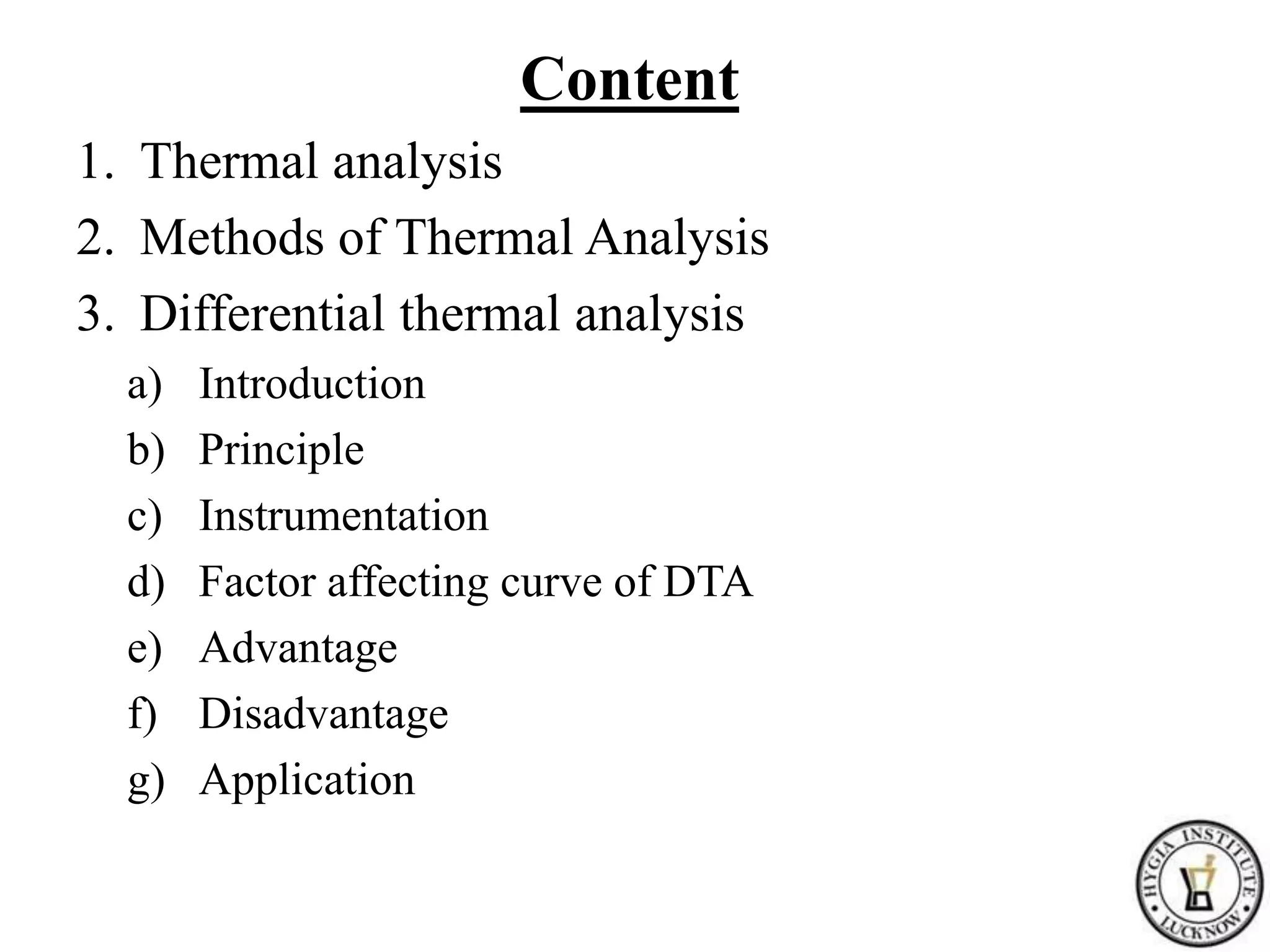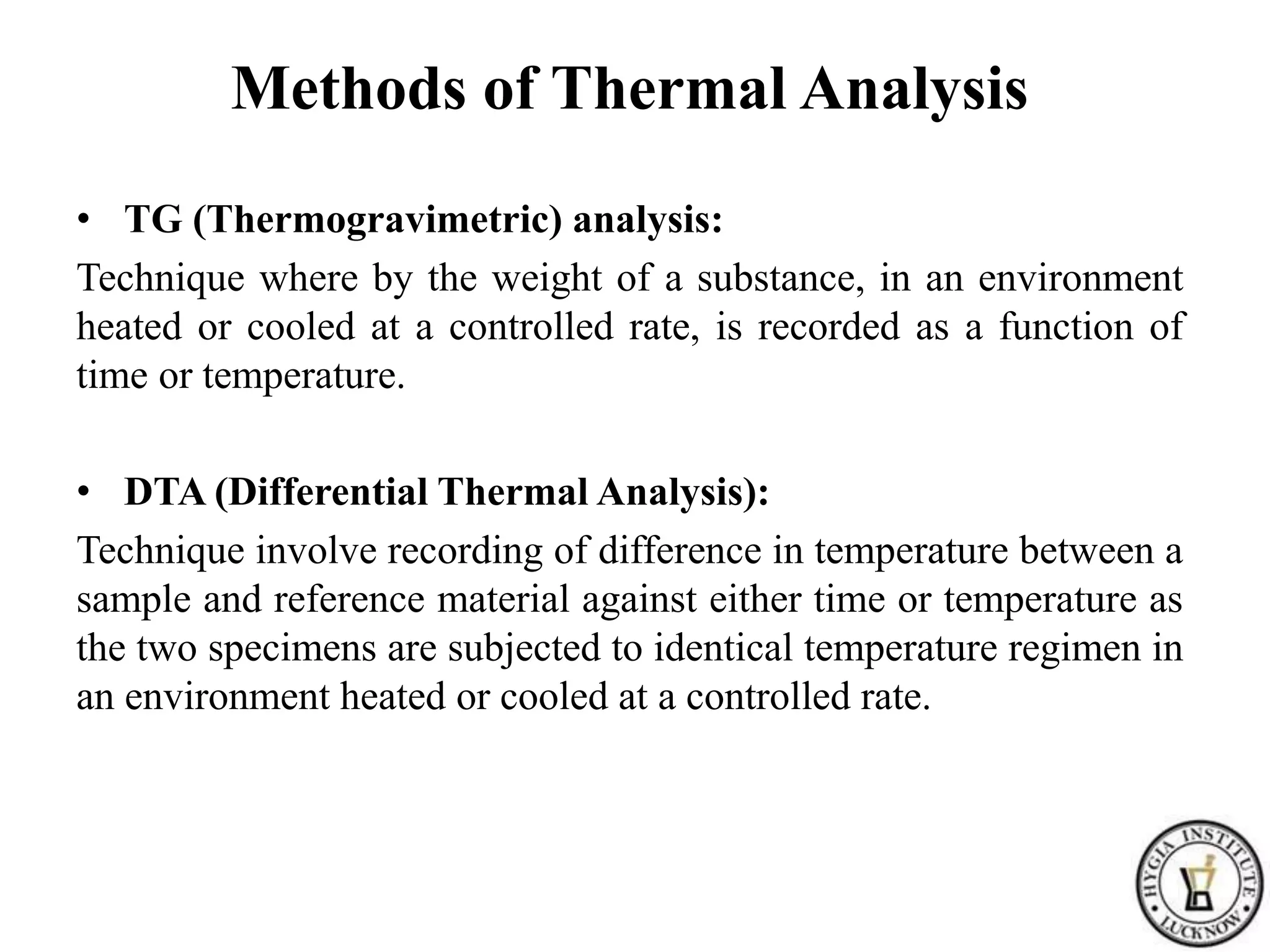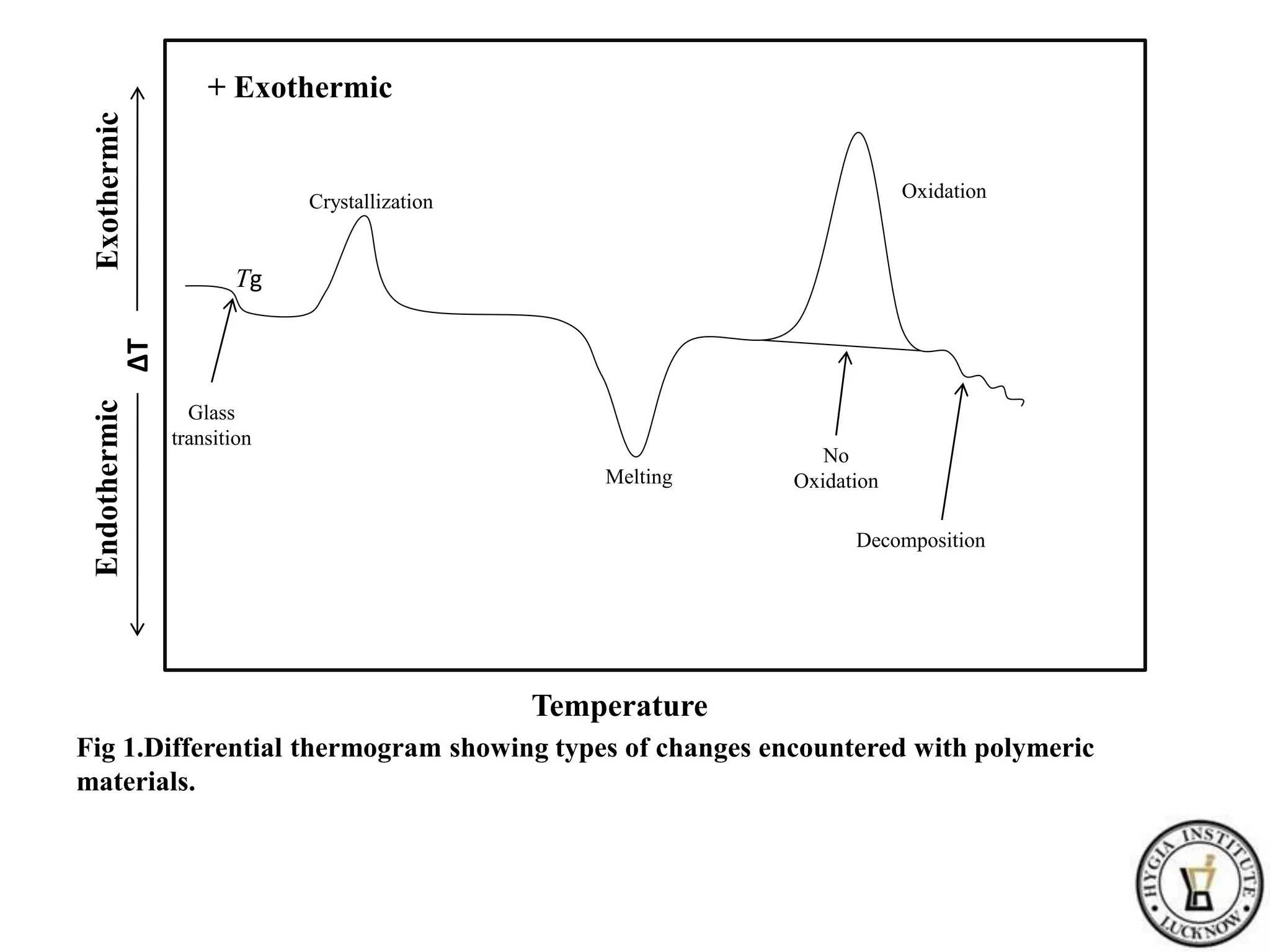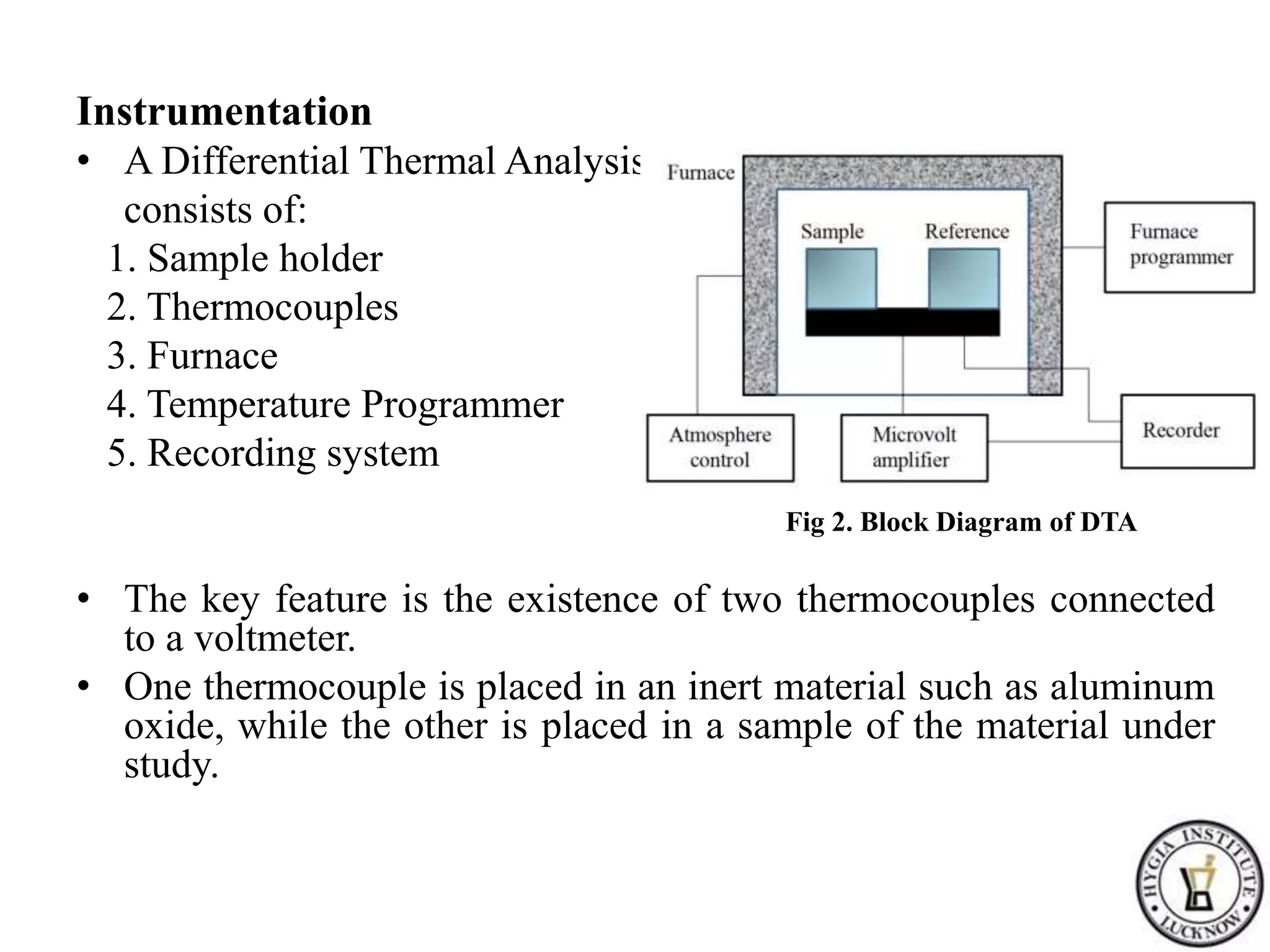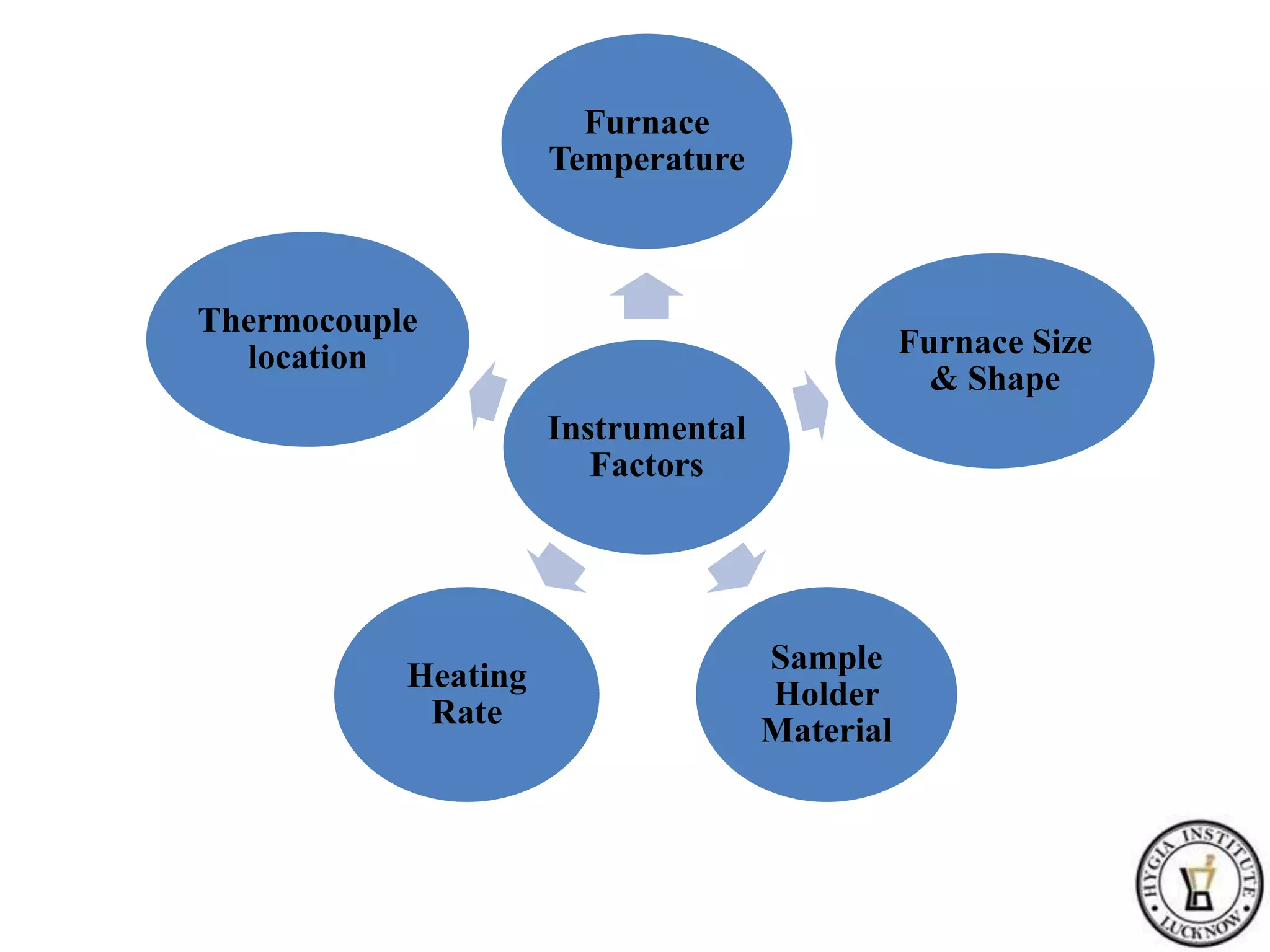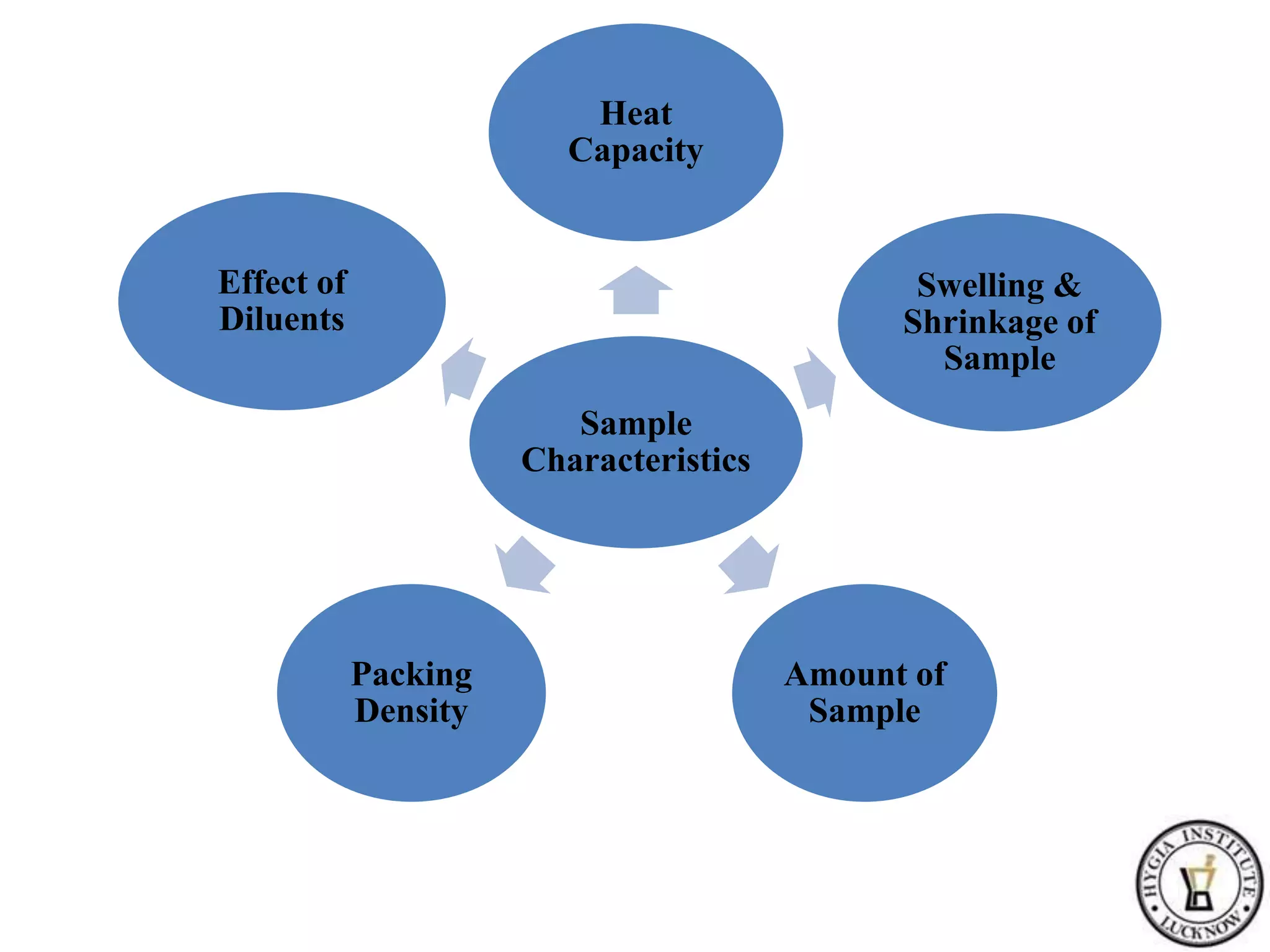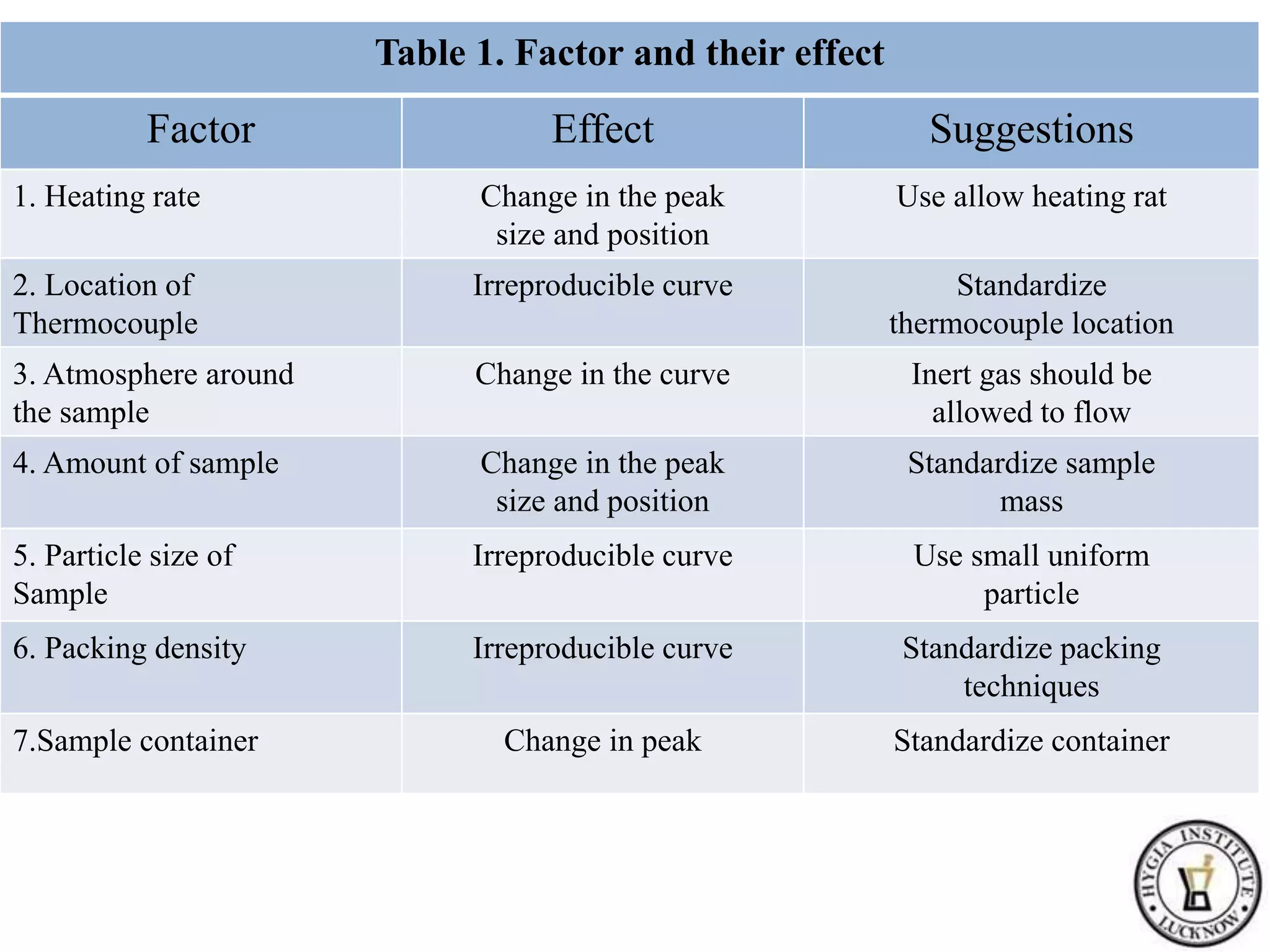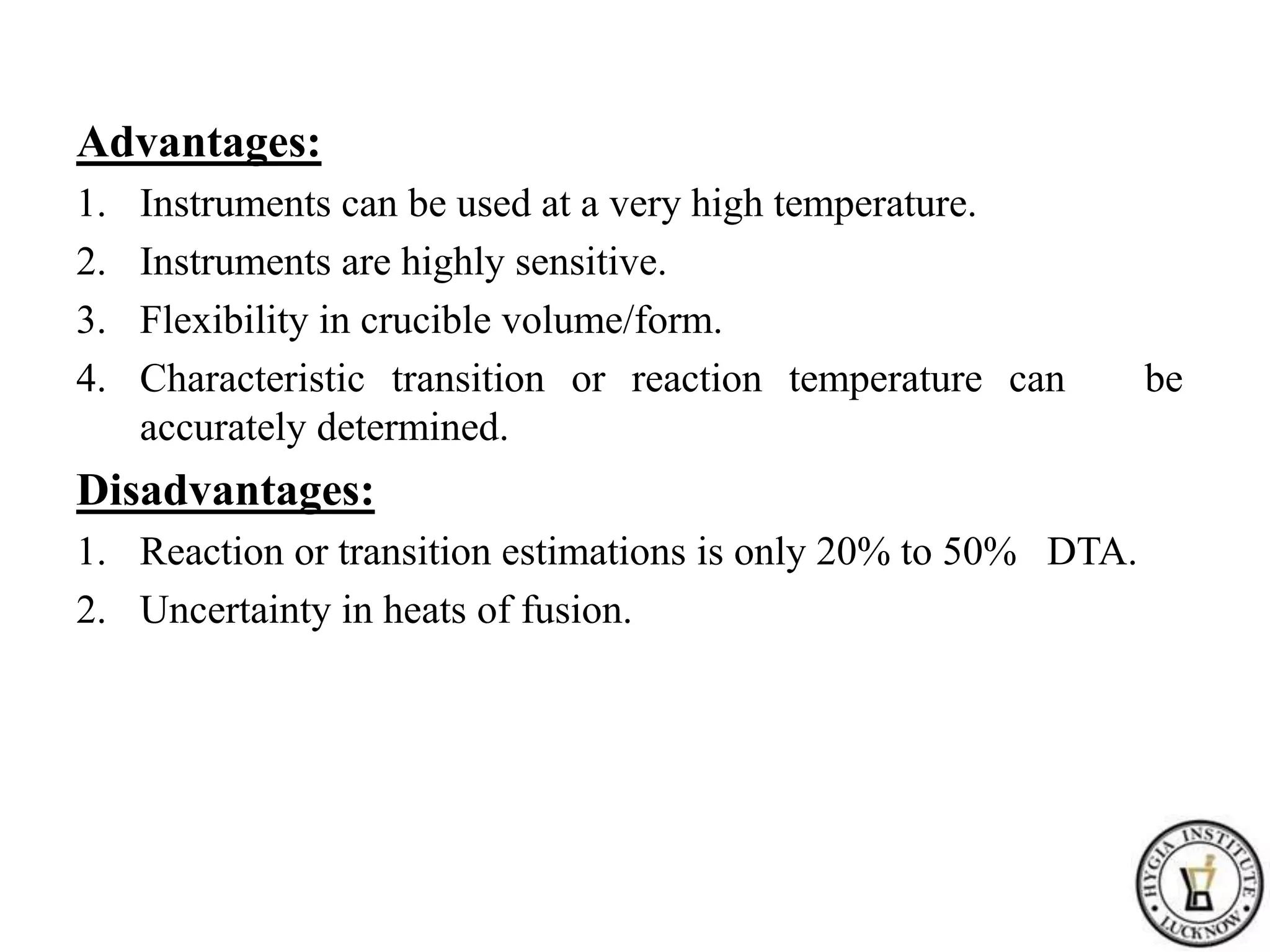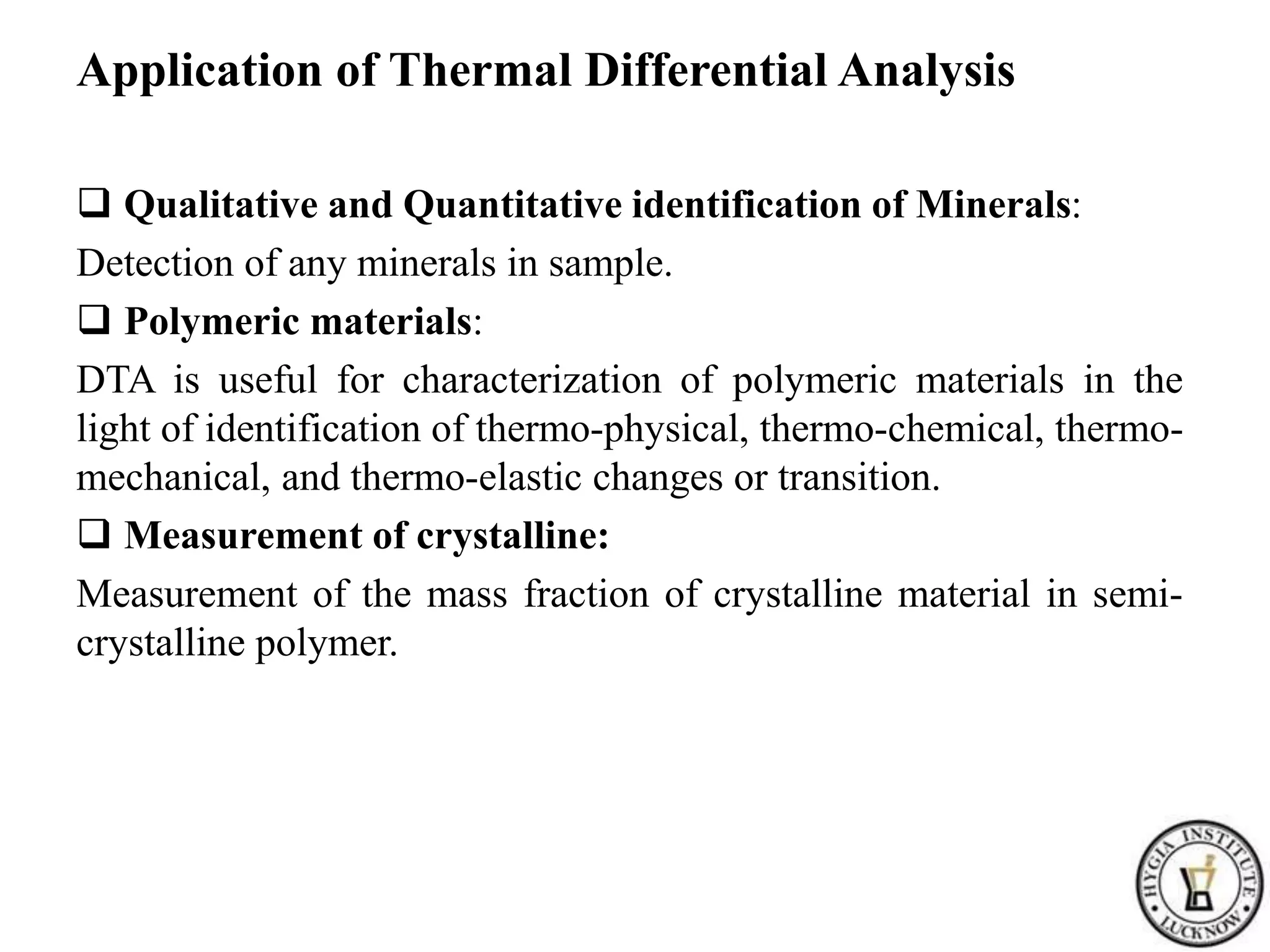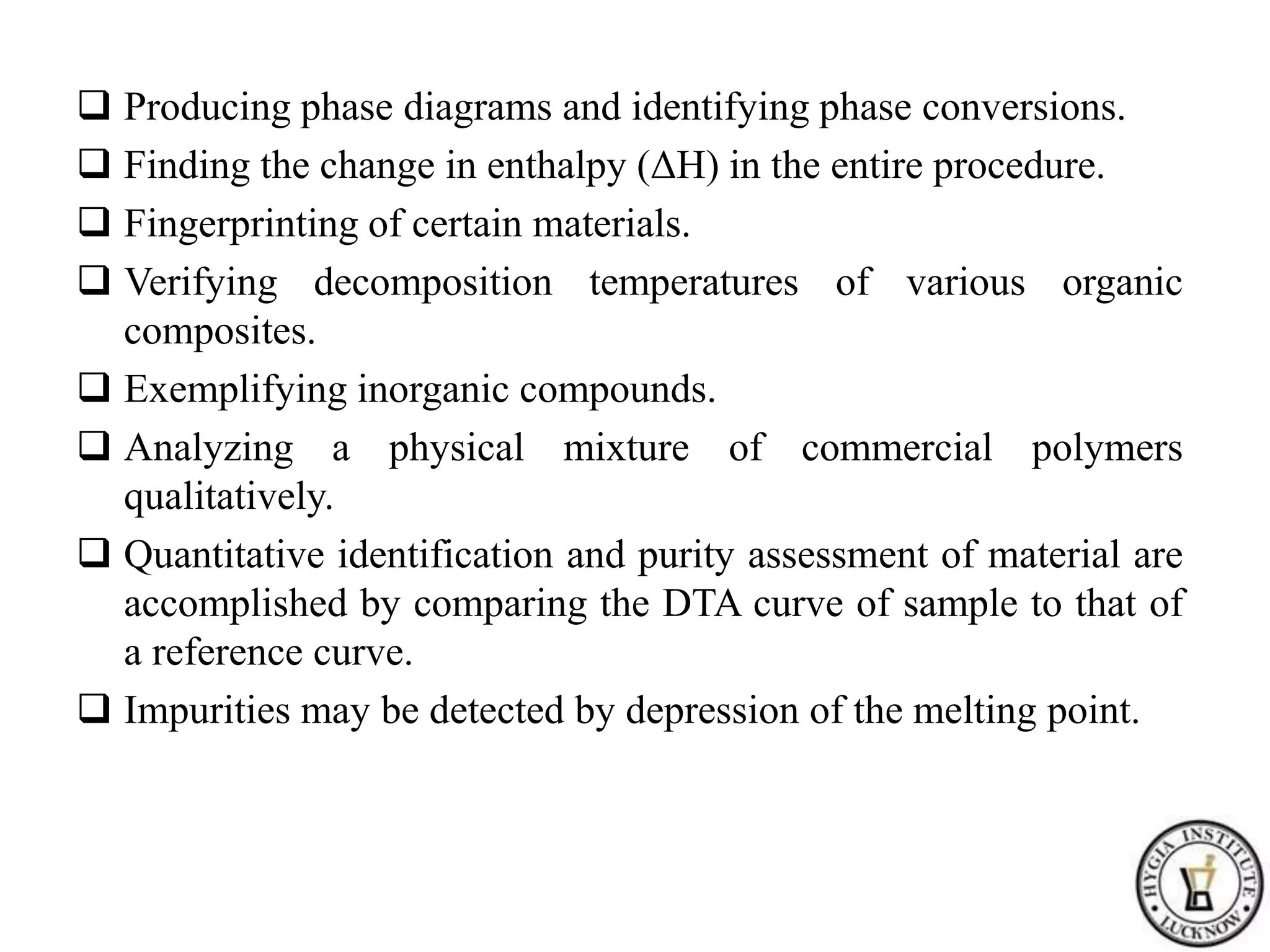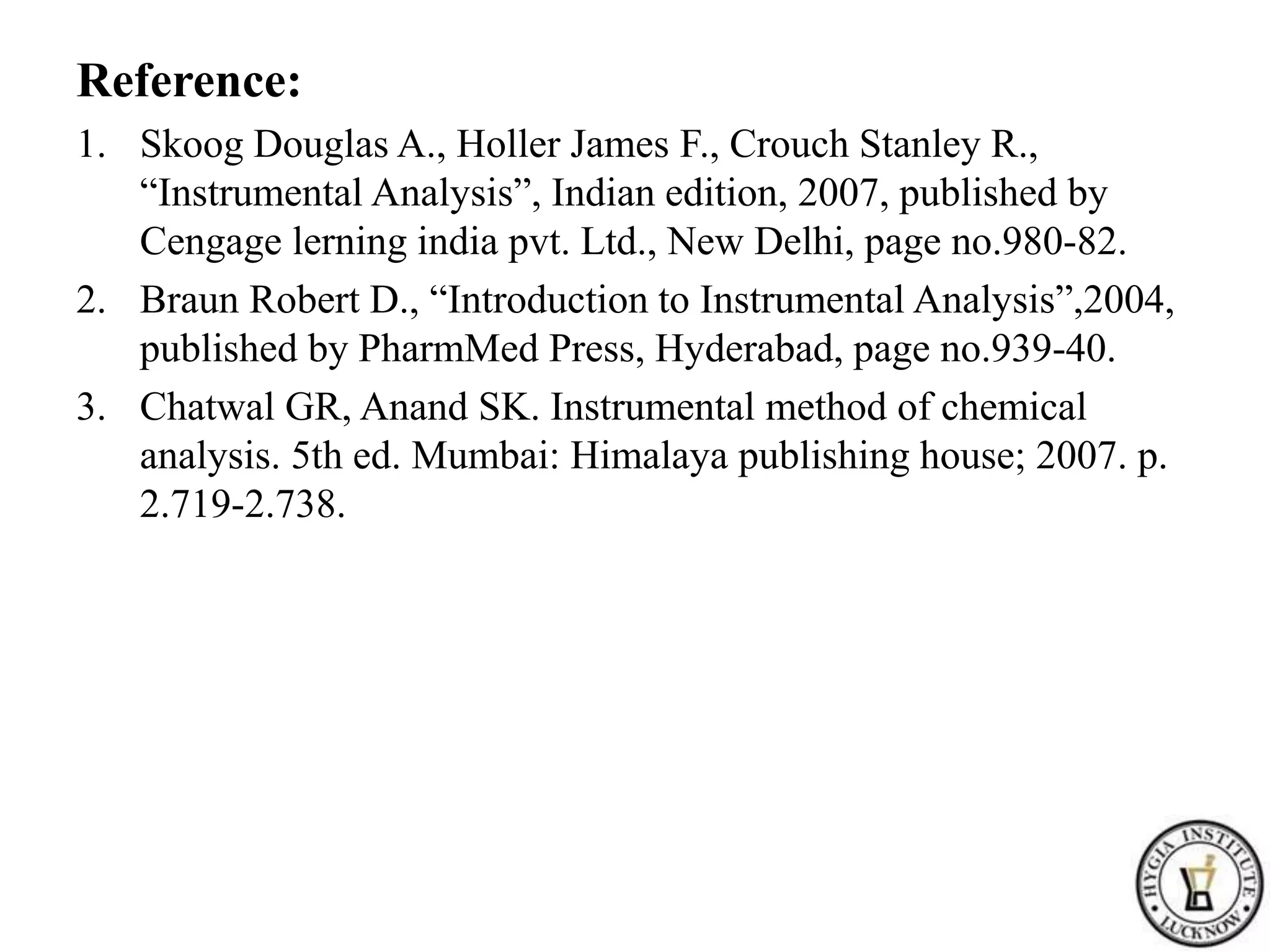Differential thermal analysis (DTA) is a thermoanalytical technique that measures the temperature difference between a sample and an inert reference material as they are heated or cooled under identical conditions. DTA curves show endothermic or exothermic transitions in a sample, such as glass transitions, crystallization, melting, and sublimation. Factors like heating rate, sample characteristics, and instrumentation can affect DTA curves. DTA has applications in identifying minerals, characterizing polymers, measuring crystallinity, producing phase diagrams, and fingerprinting materials.

